Quick Takes
Majority Say Business Is Not Doing Enough for Climate Change
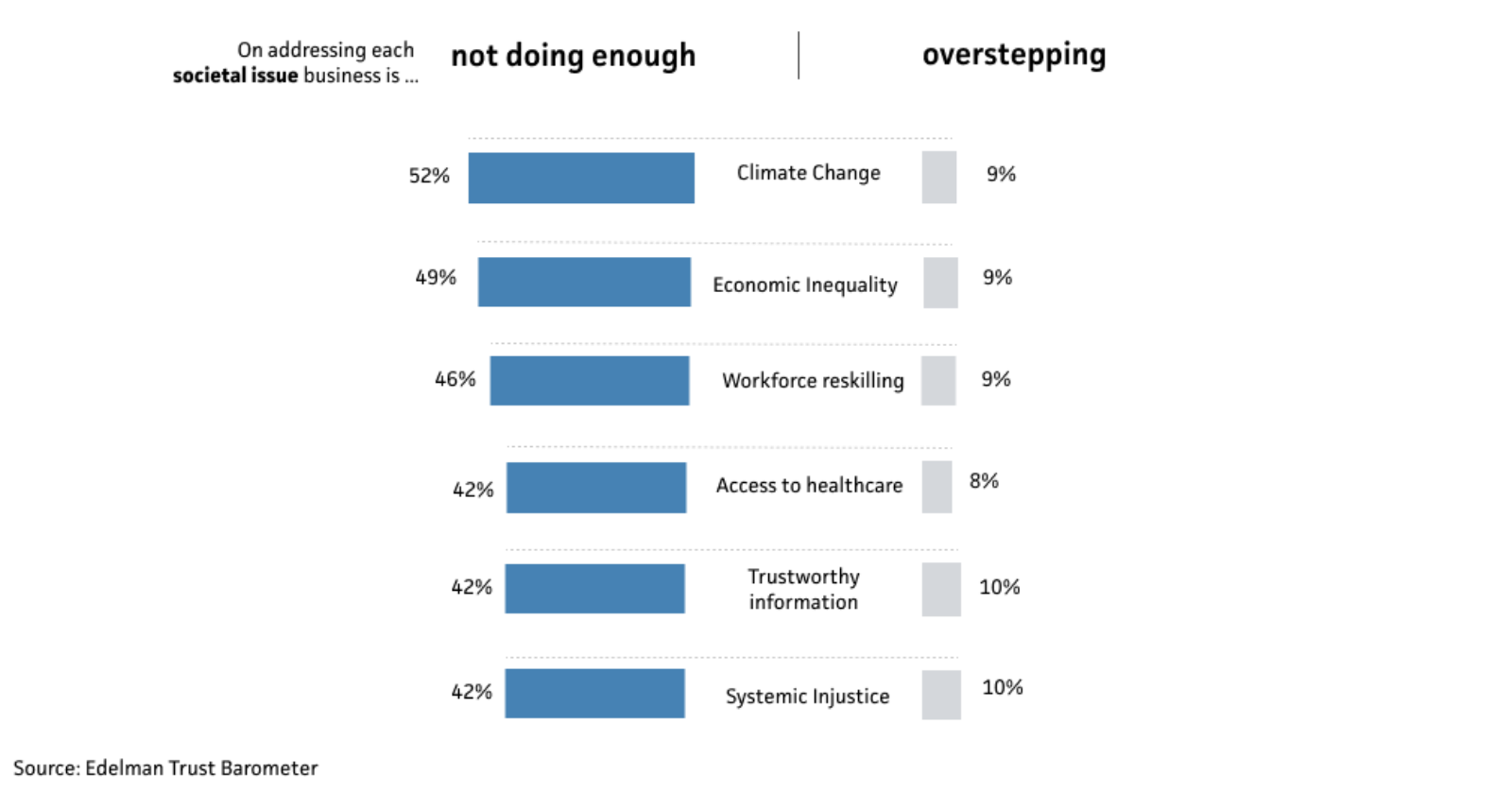
Businesses are not doing enough to address climate change, economic inequality and workforce reskilling, according to the 2022 Edelman Trust Barometer.
In its 22nd year, the vaunted research firm continues to be a trusted source of consumer sentiment. This year, it surveyed 31,000 people from around the globe and found that 52% of respondents think that businesses are not doing enough to address climate change, whereas 39% think that businesses are doing just the right amount. Nine percent say that businesses are overstepping, mostly in the areas of addressing trustworthy information and systemic injustice.
The findings, however, shed light on a general public that generally agrees that societal issues aren’t strictly the responsibilities of politics or consumers. This speaks to the ever increasing pressure of businesses to address ESG issues. It matters how ESG is measured, however: Research has also shown that stocks that profess to be ESG-friendly can still have adverse effects on the environment.
Scientists and Co-Workers Top Trust List
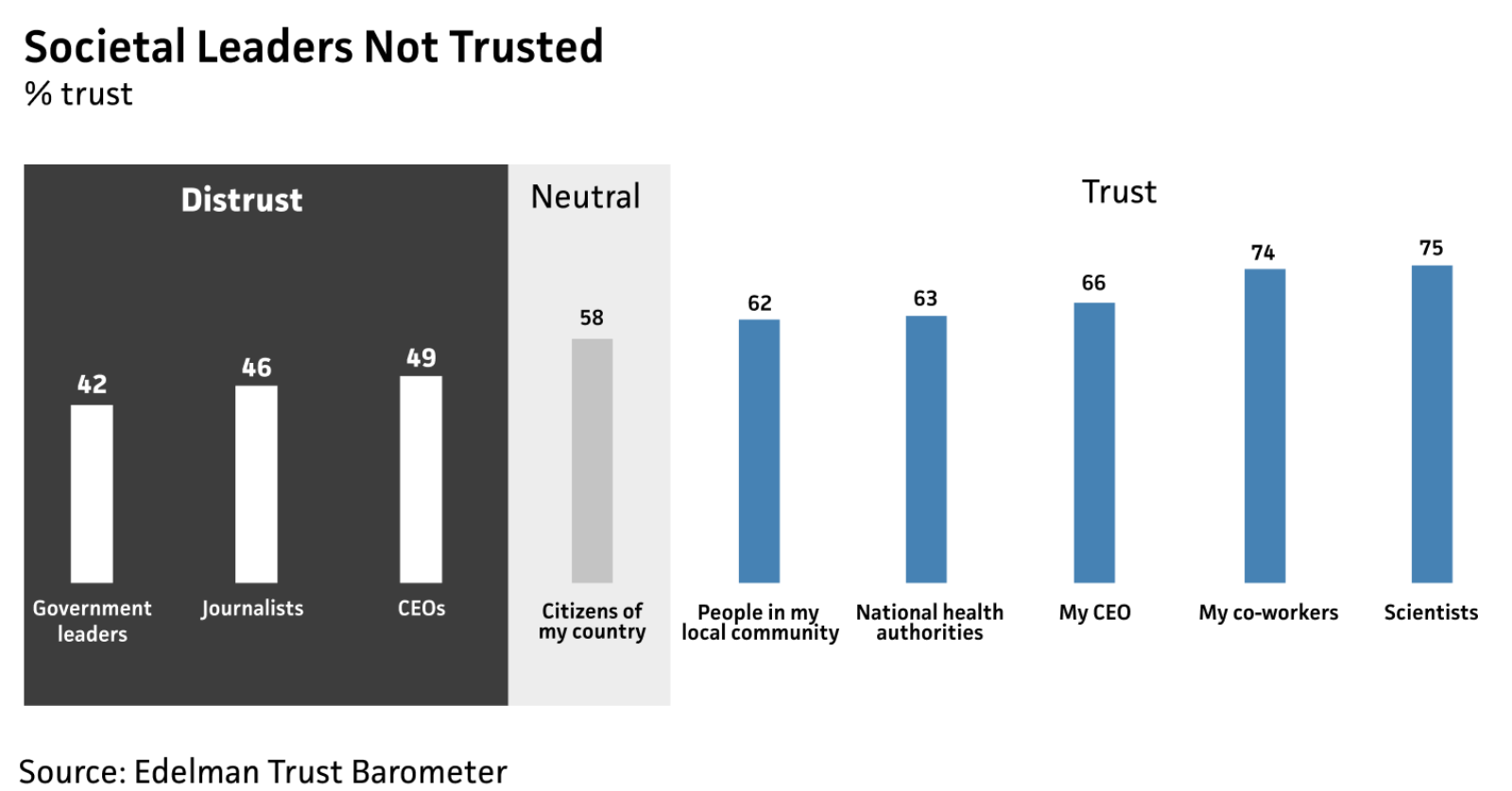
In the 2022 edition of the Edelman Trust Barometer, the research firm found that respondents trust members of their personal group over large institutions.
Edelman surveyed 31,050 people from 27 countries to rate each category using a nine-point scale, with one being “do not trust them at all” and nine meaning “trust them a great deal.” The survey found that respondents trust scientists and national health authorities as well as the CEO of the company they work for and members of their workplace and community. This was a trend reflected in last year’s poll as well. They distrusted CEOs in general, journalists and government leaders — further enforcing the distrust of institutions.
The trust in public health and science comes as COVID-19 continues its second year. The trust in a person’s company leader and co-workers shows the importance of building a strong company culture that provides flexibility and a sense of purpose as well as physical and mental health support.
Oil and Gas Production Causes Record Levels of Methane
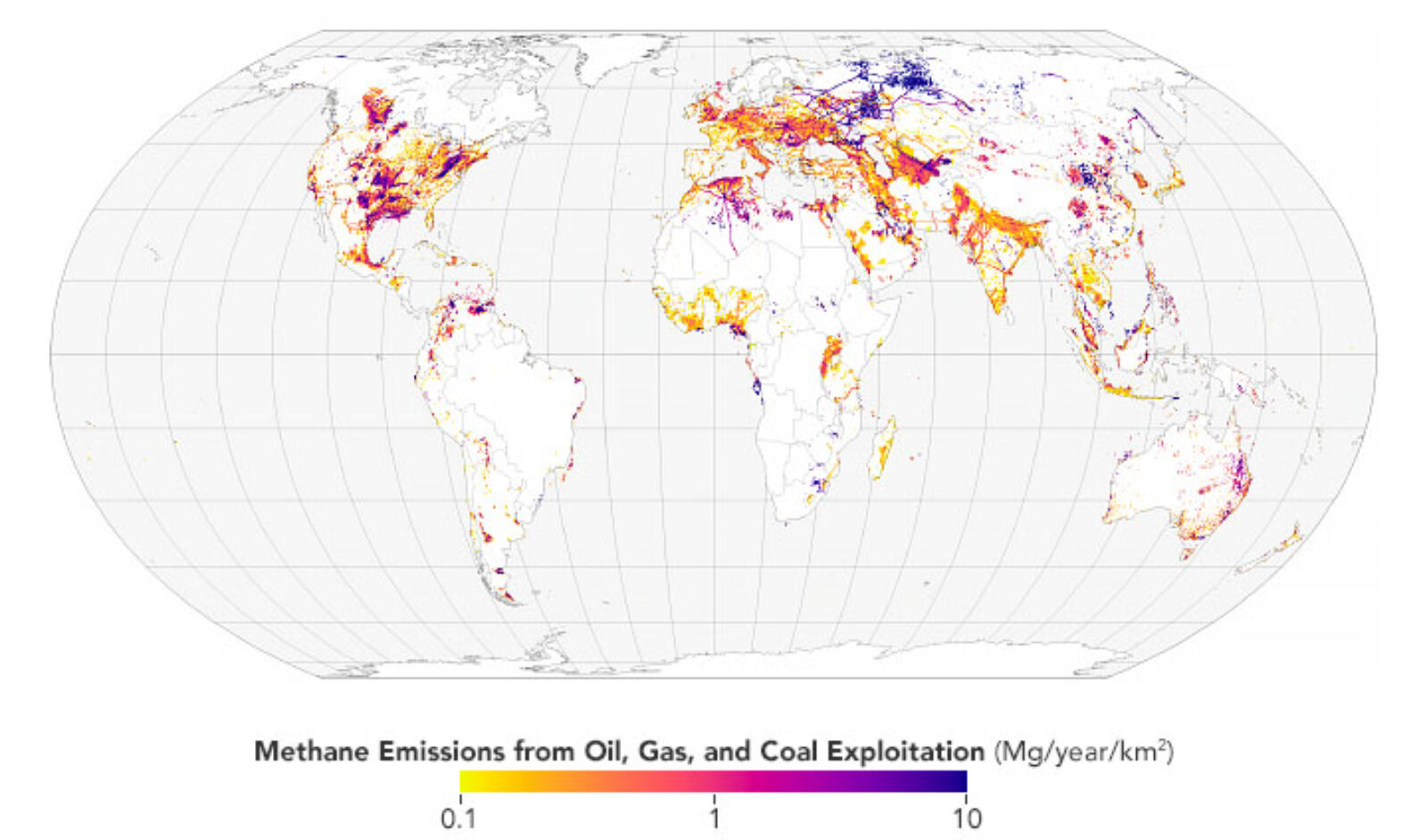
NASA’s Goddard Earth Sciences Data and Information Services Center.
The amount of methane in Earth’s atmosphere has reached record levels in recent years, according to new research from the United States National Oceanic and Atmospheric Administration (NOAA).
A major source of methane emissions is the extraction, storage and transportation of oil, natural gas and coal, which results in the release of about 97 million metric tons of methane gas each year, according to the United Nations. NASA’s Goddard Earth Sciences data team found that Russia emits the most methane related to oil exploitation, the U.S. leads natural gas emissions; and coal emissions are highest in China.
Methane is a potent greenhouse gas, trapping about 35 times more heat than carbon dioxide. Governments at the COP26 conference in Glasgow last year pledged to reduce methane emissions by 30% compared with 2020 levels. Businesses are also pitching in by choosing where their gas comes from — grading gas sources by the amount of methane emissions they produce.
Less-Educated Women Left the Workforce During the Pandemic
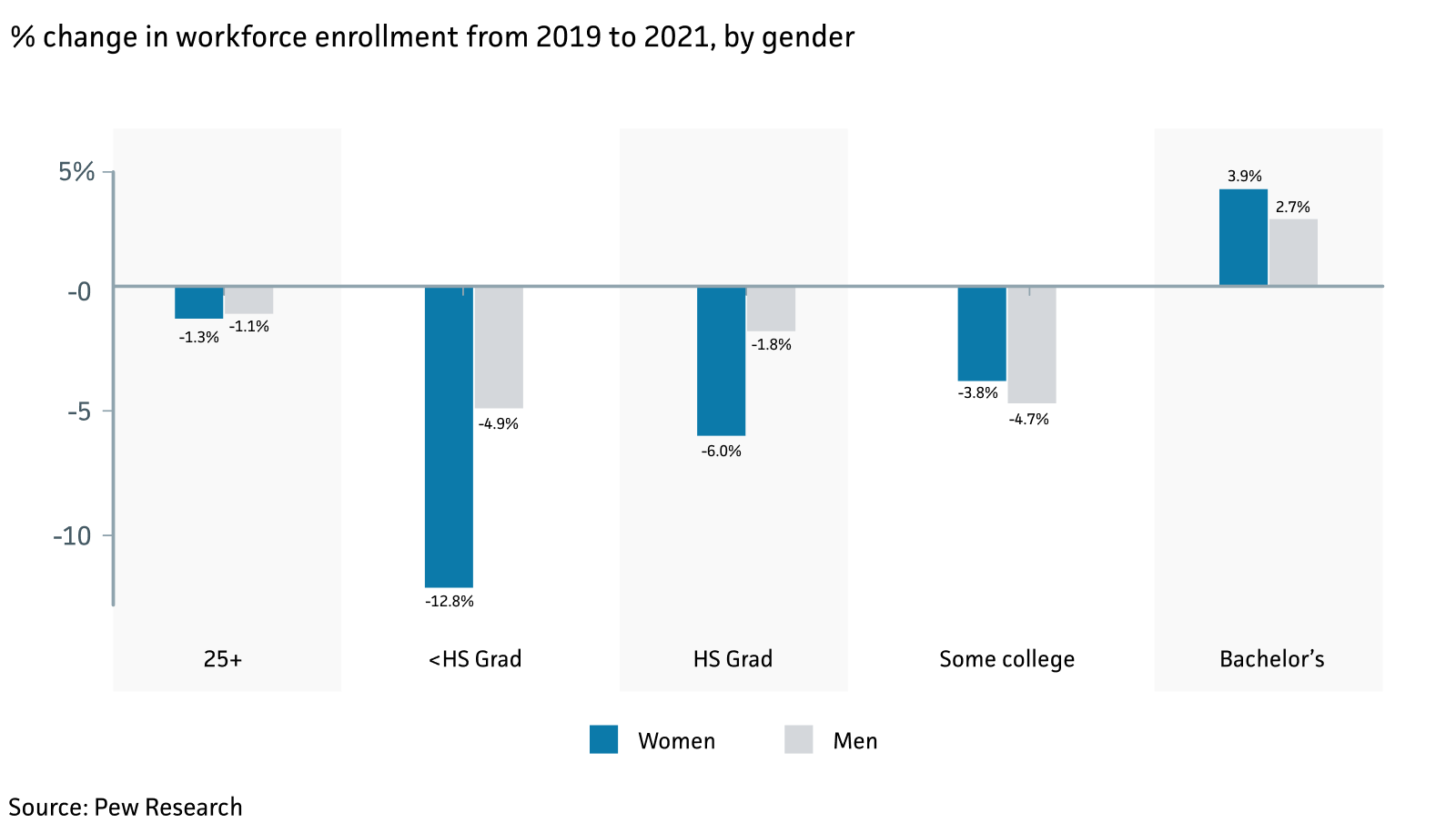
The pandemic affected the workforce differently depending on people’s gender and education status, according to new research from Pew. In 2021, the percentage of women aged 25 or older in the workforce dropped by 1.3% compared to 2019’s numbers, and those with high-school degrees were more likely to leave the workforce than their college-graduate counterparts.
In 2021, the percentage of high-school-educated women in the workforce dropped by 6% compared to 2019. Their male counterparts saw just a 1.8% decrease in the workforce. The difference is even more drastic for those who are not high school graduates: In this category, there are 4.9% fewer men and 12.8% fewer women in the workforce.
The difference may be explained by the gender balance in industries affected by the pandemic. The health-care industry, for instance, is 60% women, and many workers are dealing with burnout after two years under stress. The same gender imbalance can be found in the food preparation and personal service occupations, per Pew.
Universities See 1 Million Student Decline Since Start of Pandemic in US
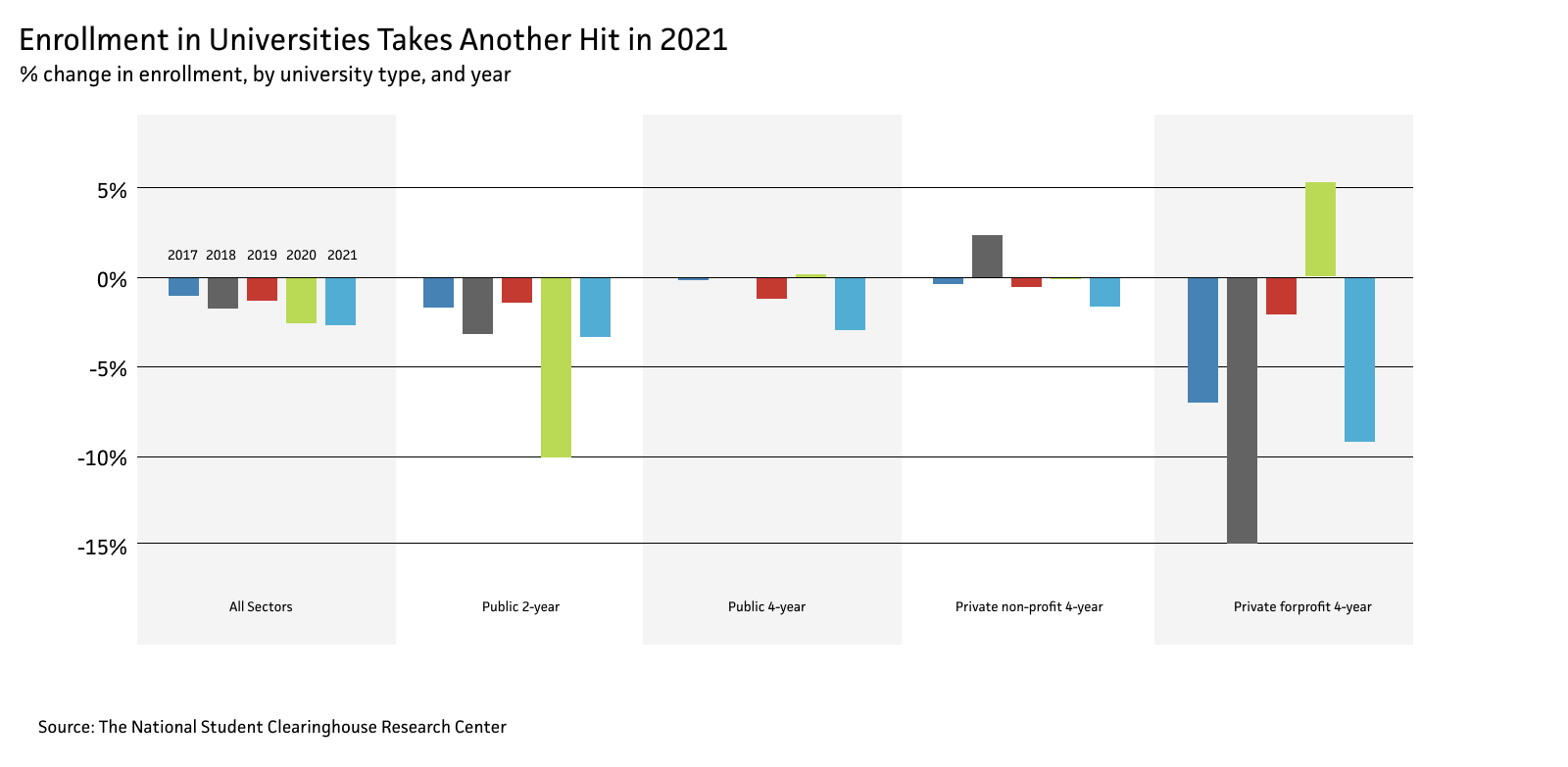
Higher education enrollment in the United States fell a further 2.7% in 2021, according to new estimates by The National Student Clearinghouse Research Center. This follows a 2.5% drop from the preceding fall. In total, 938,000 fewer students have enrolled in colleges since the fall of 2019, before the pandemic, the center estimates.
Private for-profit four-year colleges saw the biggest drop, with 11% less students enrolling in 2021. Followed by community colleges (-3.4%) and public four-year colleges (-3.8%). Private nonprofit colleges were least impacted, with a 1.5% decrease.
The trend in college enrollment indicates more are inclined to join the labor market directly — taking minimum-wage jobs in part because rates have risen under increasing pressure and a competitive job market. Even more are turning toward trade schools in lieu of traditional universities. This also comes at a time when universities are navigating the COVID-19 landscape, with many courses shifting toward remote instruction.
No comments:
Post a Comment